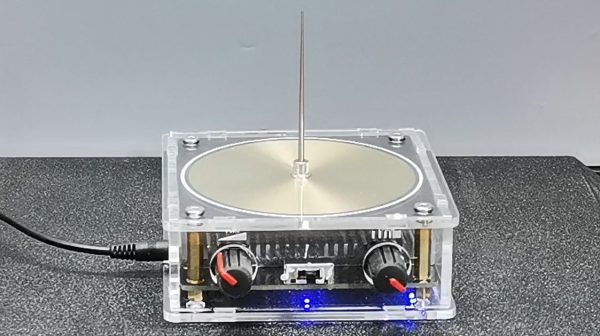Once upon a time, musical Tesla coils were something you primarily saw at high-voltage hobby meets. They’ve become more popular in recent years, and now you can even buy cheap examples online. [mircemk] decided to buy one and gave it a whirl.
The device comes with a power supply capable of delivering 2 amps at 48 V. It’s a solid-state design, relying on SMD MOSFETs to generate high-voltage, high-frequency output that makes the sparks we all know and love. The pancake coil is key to the design, and is made using a trace on the PCB — a neat technique compared to making one with a laborious winding operation.
The coil can be used to simply generate sparks, or it can be modulated musically. In this mode of operation, it’s intended to be driven by square wave audio for simplicity’s sake. As seen in [mircemk]’s video, the sound quality is pretty decent for a cheap device, and the Super Mario theme is readily recognizable. As a guide, he also demonstrates how to drive the device using an Arduino set up for square wave audio output.
If you prefer to build your own singing Tesla coil, you can go that route instead. Or, you could buy one of these and hack it, and drop us a line with what you come up with! Similar devices are all over the ‘net. Continue reading “Cheap Musical Tesla Coil Put Through Its Paces”














